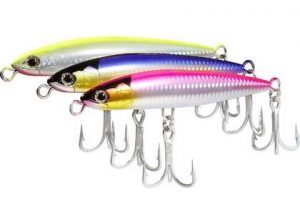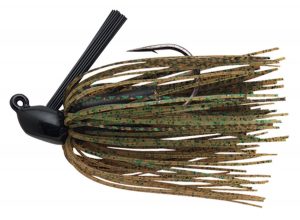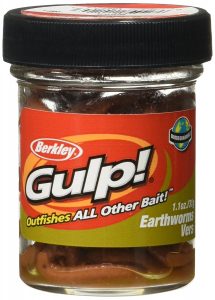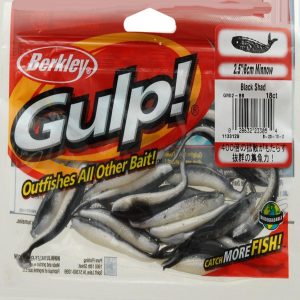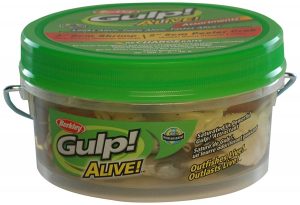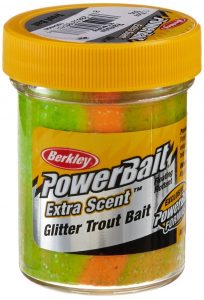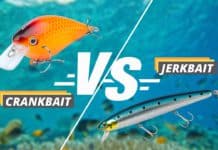If you want to catch any fish on your next fishing outing, you better have the right bait. Certain fish respond better to some baits than others so you should research the best bait for the fish you’re hoping to catch before you go fishing. Below we give an overview of the most common different types of fishing baits.
Lures vs. Bait
What Is a Fishing Lure?
A fishing lure is an artificial fishing bait that is designed to look like live prey to a fish. They have attached hooks are designed to replace the use of live bait when fishing. Fishing lures can be made from natural or man-made materials (such as plastic) and include various attachments like feathers or shiny spinners. The type of fishing lure you use depends on what type of fish you plan to catch and at what water depth.
What Is Fishing Bait?
Fishing bait consists of fishing lures as well as live or artificial bait that can be attached to fishing hooks to attract attention. This can include worms, minnows, or power bait (looks like marshmallows).
What Kind of Lures or Bait Should You Get?
The right fishing lures or bait depends on the type of fishing you will be doing. Bass tend to prefer jigs, crankbait, and worms, but will usually bite anything they can find. On the other hand, trout tend to prefer live bait or at least bait that smells like live bait (like PowerBait dough).
Fishing baits usually weigh from a quarter to an ounce to three ounces. The most popular weight preferred by the majority of bait casters is the five-eighths-ounce bait, while the average is between half and three-quarters of an ounce.
If you’re using a lure, you will put the whole lure on the end of the fishing line. Otherwise, live baits can either be used whole or cut into chunks. Anglers can also use dead or live baits. Fishing baits can be used whole, piece, and strips, based on the activities of the type of fish being chased. Additionally, the size of the fishing bait is usually well matched with the scale of the fish being hunted. Now, let us take a look at the most common forms of fishing baits.
Types of Fishing Lures
Spinner Bait (Spinners)
Spinner baits, also known as spinners, are characterized by the presence of blades on their shafts and hooks. They are preferred by most anglers when they are after freshwater fish varieties. However, you will need to be careful with these lures as they are generally reserved for experts. Spinners are fit for aggressive fish, such as bass, for they can better imitate feed animals. They come in many shapes and colors depending on the targeted depth and species. While not for everyone, you should certainly add a few spinners to your tackle box.
Spoons
These baits vary from the spinners in their look. These are commonly used for freshwater fishing and are proven by most fishermen. Spoons work well because as they move through the water, they create vortices in the water behind them, similar to the vortices smaller prey create.
If you are fishing from a boat, have a spoon lure is a must since the movement of your boat dragging the spoon through the water enhances the imitation effect. You should definitely consider adding a few spoons to your tackle box.
Plugs
Plugs, also known as crankbait or wobblers, work by hovering near the surface and “diving” when you reel them in. These baits will just float in the water if you are not putting any tension on the line. When you start applying pressure, these lures will appear to dive or wobble below the surface.
These lures are typically made from wood or foam so that they are buoyant enough to float near the surface. While generally best for expert anglers who can maneuver the lures through the water, anyone can use these lures.
Jigs
These are weighted hooks. They vary in shapes and styles. Some look like plastic bodies and tails. A jig is perfect for almost all species of fish, and its color is its main advantage. This is another perfect addition to your tackle box.
Swim Bait
Swim bait is an effective fishing lure because it is designed to look like a minnow. Usually, a soft plastic minnow acts like a plug when it is retrieved, appearing to swim through the water. Sometimes the lures have swimming tails which is why they are called swim baits.
Surface Bait
These are fishing lures that are used to mimic fish prey on top of the water. They are usually used with a popping sound or burbling sound, which adds to its attractiveness. The surface fishing lures need to be moving as well. You will need to apply movement skillfully to resemble real prey.
Types of Baits: Live and Artificial
Live baits are very popular and include baits such as live worms, live minnows, leeches, frogs, and even crayfish. Some anglers even like to use live insects such as crickets and grasshoppers when fishing with live bait. No matter which type of live bait that you choose to employ when bait fishing the biggest thing is that you present that bait in the most natural way possible. In other words, you want your bait to appear natural without giving away the fact that there’s a hook inside. Various types of rigs are an excellent way to accomplish this task in many cases.
Worms
Worms are a very effective bait for trout fishing, especially when drifting through the current of a small river or stream. Worms as trout bait used to mean exclusively live worms, but now also includes synthetic worms. Synthetic worms are almost as useful as live worms for trout bait, and much less messy.
A great way to rig worms as trout fishing bait is to use gang hooks. These hooks allow for a completely natural and extremely effective presentation of a worm for fishing.
Minnows
Minnows are some of the best baits to use when fishing for almost any species of fish. It is also one of the oldest baits used for fishing. One great thing about fishing with minnows is that they can be used both dead and alive. However, live minnows tend to perform better than dead ones.
Many anglers prefer to use minnows over worms or insects because of their effectiveness. Many anglers actually enjoy catching their own minnows to use for fishing instead of purchasing them from a bait and tackle store.
Shrimp
Shrimp is a prized fishing bait and usually has the best results for many types of fishing. it is considered to be very valuable bait for certain saltwater fish, especially those that are considered inshore fish like red fish, speckled trout, shook, and more.
Power Bait
Power bait is most effective for stocked trout, but will even work on native trout. Power bait comes in many different colors and is molded onto a hook. The best technique ever seen for using Power bait to catch trout is to float it off a bottom fishing rig. Not only is Power bait trout bait infused with trout attracting scents, but it also floats, so using a lower portion rig is a great technique. The best color of Power bait is determined through trial and error, as the most productive color often changes from day to day.
Synthetic Bait
Many anglers use synthetic bait, mainly for trout fishing. Synthetic bait is best employed in lakes, and thus still fishing is the preferred method. While fishing with synthetic bait may seem unnatural, it can come in handy throughout the year when natural bait is hard to come by.
Sand Fleas
Sand fleas are a great bait option for catching a variety of fish, but in particular for catching pompano, sea mullet, redfish, black drum, and sheepshead.
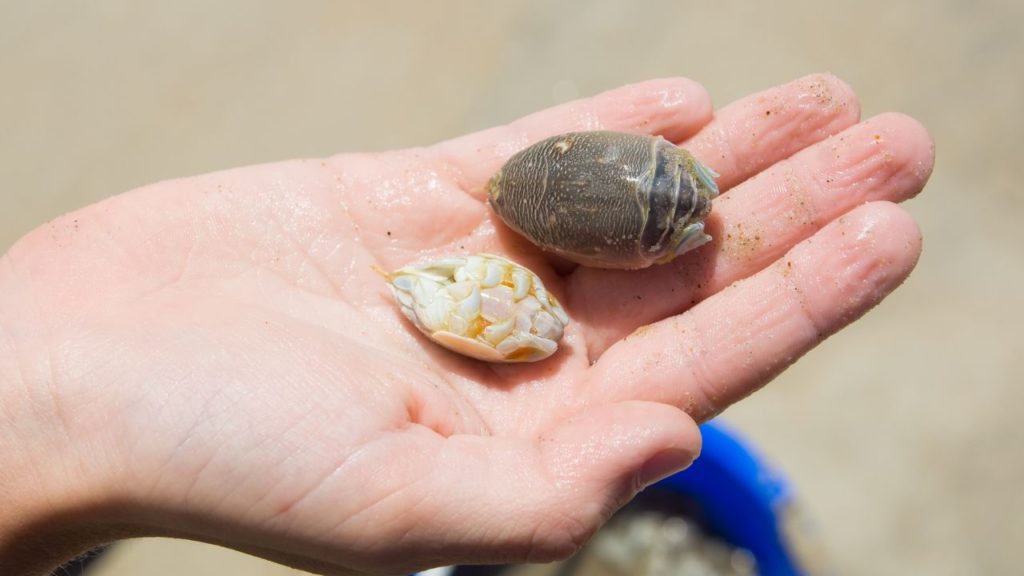
Conclusion
Using the right bait is key to having a successful fishing trip, but you should research the area you’ll be fishing in ahead of time to make sure you are using the right kinds of bait. Not all bait will work with the same type of fish in different areas and some bait will work better for you based on the level of experience you have fishing. It’s best to have multiple types of bait and lures in your tackle box so that you can try different types while you are out fishing. Best of luck!
Table of Contents



